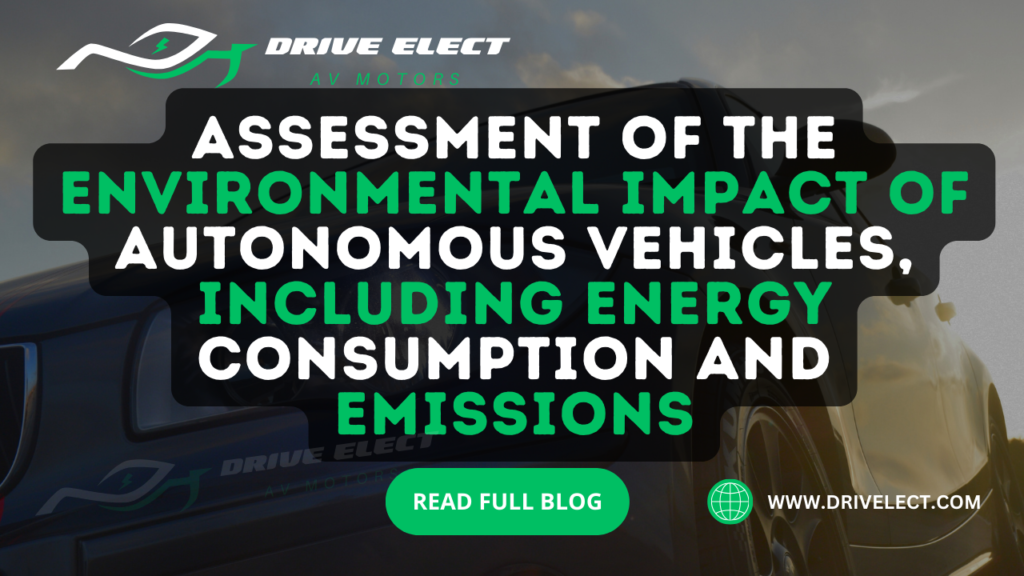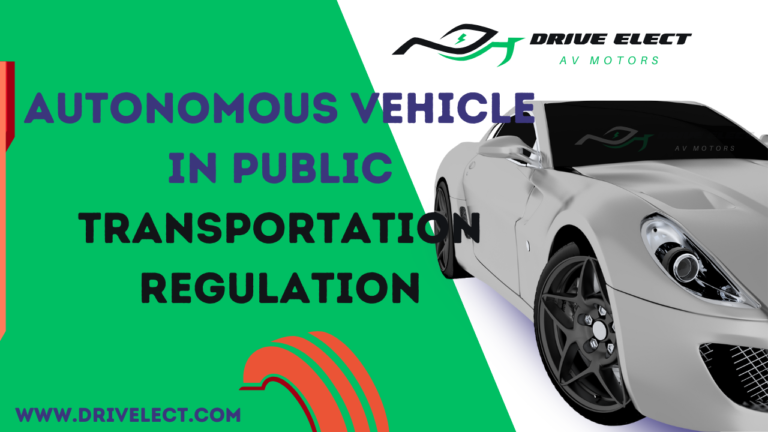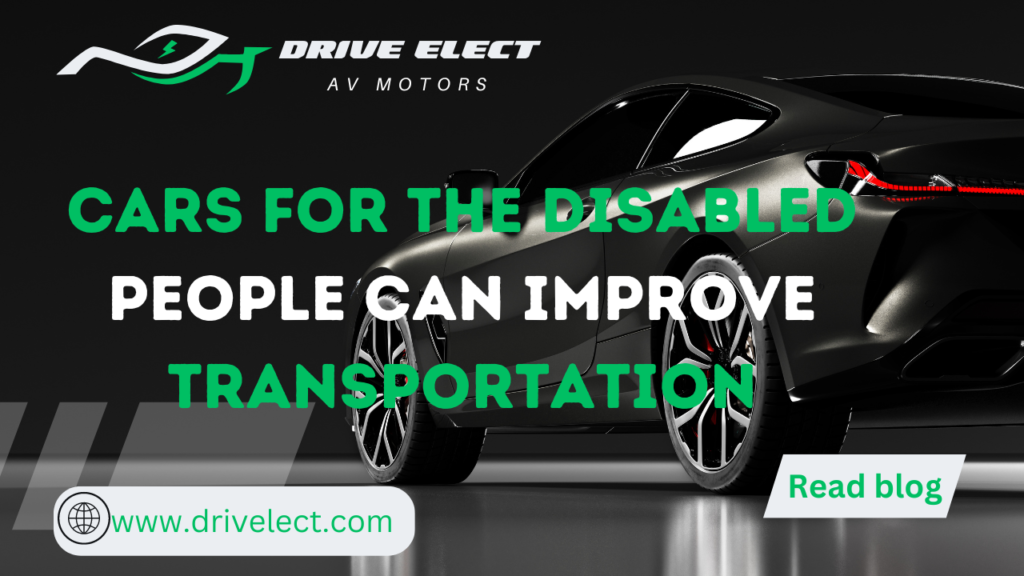This research discusses the environmental impact of autonomous vehicles (AVs), a topic often overshadowed by a focus on emissions. Most studies concentrate on air pollution, but this research takes a broader perspective, including land, water, noise, and light pollution.
The study uncovers the potential benefits of AVs, like technical advancements and improved traffic flow, through a systematic review, depending on factors like widespread adoption and shared mobility. However, drawbacks such as reduced trip value and user preferences also emerge.
Changes in land use due to AVs are being explored, impacting emissions, soil, and water. Noise and light pollution improvements should be explored more. Overall, the paper emphasizes the need for more comprehensive studies to gauge the full spectrum of AVs’ environmental impact for a sustainable future.\
Table of Contents
ToggleAssessment of the environmental impact of autonomous vehicles, including energy consumption and emissions
Introduction:
This research discusses the environmental impact of autonomous vehicles (AVs) in a world where private cars contribute to about 60% of greenhouse gas emissions from the transport sector. With the potential number of cars expected to double by the 2030s, there’s a heightened focus on sustainable mobility due to climate change concerns.
AVs are seen as a solution for more efficient driving and enhanced traffic flow, but their introduction must be managed to avoid unintended consequences. The technology for fully autonomous driving is still in development, with the most significant benefits expected at level 5 automation around 2030. Economic projections suggest that AVs could generate substantial revenue by 2050.
While the potential benefits of AVs are recognized, their environmental impact of autonomous vehicles are a topic of growing interest in scientific literature. A few comprehensive studies explore the ripple effects of AVs on energy consumption, air pollution, land use changes, and more. However, the literature in this area still needs to be more extensive, and this article aims to review existing studies using databases like Scopus and WoS. It categorizes environmental effects into various aspects, including air quality, land use, water, noise, and light pollution.
The review serves a dual purpose: examining established environmental impacts and highlighting areas that need sufficient attention for potential future research.
The article concludes with a structured presentation of findings in different subsections, providing insights into how the literature addresses the environmental effects of AVs on air, land, water, noise, and light pollution.
It emphasizes the need for further research to comprehensively understand and address the potential environmental impacts of autonomous vehicles, offering valuable insights for sustainable future mobility.
Methodology:
To investigate the environmental impact of autonomous vehicles (AVs), a literature review was conducted in August 2020 using Scopus and Web of Science. The initial search used common keywords like “Automated,” “Autonomous,” “Self-driving,” or “Driverless,” combined with terms like “Vehicle(s)” or “Car(s).”
This search generated thousands of references. The next step broadened the search to include terms related to environmental impacts, covering various physical environments, including noise and light pollution.
The review process occurred in three phases. Firstly, articles were identified using the specified keywords, focusing on scientific journal articles published in English, resulting in 1143 articles.
Duplicate articles and those unrelated to the study’s focus, such as autonomous marine vehicles, were excluded, reducing the count to 932 articles. Further refinement excluded articles not sufficiently representative of the field (126).
This process left 93 articles for the research, with an additional 15 found through the “snowball” technique, exploring both forward and backward citations. Additionally, seven relevant references for providing insights into recent literature were considered.
In essence, the literature review aimed to comprehensively explore the environmental impacts of AVs by first identifying relevant articles and then refining the selection to ensure a focused and representative set of studies.
The chosen articles contribute to understanding the broader implications of AVs on different physical environments, forming the basis for the research’s insights and conclusions.
Air quality effects:
The environmental impact of autonomous vehicles (AVs) is predominantly studied through emission variations, and the findings fall into three main groups.
The first group examines operational concepts in various situations, mainly when all vehicles are autonomous.
The second group focuses on a mixed traffic environment, considering different levels of AV adoption and various scenarios.
The third group explores the impacts of AVs on fleets and shared mobility. Additionally, studies are addressing the effects of AVs on the entire transport system and their compatibility with other modes of transport. However, these studies provide more qualitative than quantitative conclusions at this point.
In simpler terms, researchers are keenly investigating how AVs influence emissions. The first group looks at situations where all vehicles are autonomous. The second group explores scenarios where AVs share the road with traditional cars, examining how emission variations change with different levels of AV adoption.
The third group delves into how fleets of AVs and shared mobility services impact the environment. Studies also examine the broader effects of AVs on the entire transportation system and their compatibility with other transportation modes. Still, these offer more qualitative insights rather than precise quantitative conclusions.
These studies aim to comprehensively understand how AVs affect our environment, especially regarding emissions and overall transport systems.
Effect on land:
The environmental impact of autonomous vehicles (AVs) on land, particularly natural habitats, is an area that needs to receive more attention. Some experts suggest that AVs might unintentionally contribute to urban sprawl, a phenomenon already studied in the context of conventional vehicles.
Concerning AVs’ impact on urban structures, it’s gaining more focus. AVs could alter how people use their travel time, potentially influencing where they live or where companies decide to set up.
The value people place on their travel time, a subjective measure of how much they are willing to pay to reduce travel time, becomes a key factor. Various studies show that AVs could decrease travel costs, potentially leading to urban sprawl or densification of city centers.
However, predictions about the impact of urban sprawl are mixed. Some models suggest increased sprawl, while others point to factors like reduced commuting costs conflicting with increased costs due to congestion and higher urban density.
The potential freeing up of urban space currently used for roads and parking is considered a positive aspect. Yet, this outcome is contingent on active policies, particularly for shared mobility adoption. Some studies indicate that while central parking space decreases, longer daily vehicle travel and increased peripheral parking may occur.
These effects translate into energy consumption and greenhouse gas emissions from an environmental perspective. If it happens, the worsening of urban sprawl needs consideration for air quality and its impact on the land. Urban sprawl can lead to the loss of environmentally fragile land, smaller open spaces, reduced landscape attractiveness, and biodiversity loss.
Effect on water:
Environmental impact of autonomous vehicles Changes in land use, mainly suburban sprawl resulting from the widespread use of autonomous vehicles (AVs), can significantly impact water quality. This is a crucial concern as urbanization, including sprawling developments, is known to have adverse effects on hydrogeological systems and stream water quality.
Expanding impermeable urban areas leads to increased flooding, reduced aquifer recharge, elimination of minor watercourses, changes in the permeability of natural terrain, and heightened pollutant levels. Such alterations affect water quality and strain water resources due to increased demand.
Studies have linked suburban urbanization to water resource degradation, emphasizing the potential compromise of future sustainability in cities like Beijing. If AVs contribute to low-density urban sprawl, as some research suggests, the effects on water quality could be substantial.
However, despite these potential consequences, the current literature, based on searches in WoS and Scopus platforms, needs more exploration of these effects on the aquatic environment beyond emissions.
The absence of such studies highlights a critical gap in understanding the holistic impact of AVs on the environment, particularly concerning water quality and hydrogeological systems. Addressing this gap is essential for sustainable urban development in the face of evolving transportation technologies.
Noise Pollution:
In urban areas, noise and air pollution pose significant health risks, contributing to over 75% of diseases linked to environmental conditions, with road traffic being a vital noise source. Health impacts of noise are often assessed using parameters like Ldn (day-night level) and Lden (day-evening-night level).
Scientific evidence shows that exposure to Ldn levels exceeding 50 dB (A) in urban environments can lead to certain diseases. Despite the transformative potential of autonomous vehicles (AVs) in transportation and user behaviors, there needs to be more research on their impact on these critical health factors.
Early studies, like one focused on Rome by Patella et al. (2019b), provide some insights. In a scenario with 100% AV presence, inner urban roads could experience a 24% reduction in noise pollution due to a 5% decrease in traffic volume.
While these initial findings are promising, more comprehensive research is needed to fully understand how the widespread adoption of AVs might influence noise and air pollution levels and, consequently, public health in urban environments. Studying these aspects is vital for creating urban transportation systems that prioritize both efficiency and the well-being of residents.










